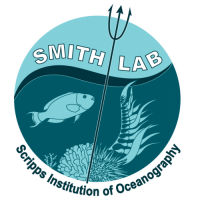The Environmental Monitor is a journal covering products, projects and trends in the environmental monitoring industry. It aims to help professionals stay informed about developments in their industry. This is a piece they did on the Smith Lab, written by Austen Verrilli.
Researchers from the Scripps Institution of Oceanography pitched tents over coral to monitor a day in the organisms’ lives and found fluctuating pH may lower chances of coral survival, according to a Scripps press release.
The 24-hour studies focused on coral near inhabited and uninhabited areas of barrier islands in the central Pacific. Researchers found that elevated daytime pH levels around uninhabited islands made for healthy coral populations.
Low nighttime pH levels in waters near populated islands may be detrimental to coral populations, causing greater acidification in the future.
Sea water pH levels affect corals’ ability to build skeletal structures. Higher pH may lead to seaweed overtaking coral populations.
Nichole Price, Scripps post-doctoral researcher at University of California San Diego and Jennifer Smith Scripps marine ecologist, were two of the studies principal researchers.
You check out the original piece here.


